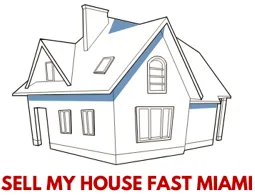
Selling Your House In
Miami
Has Never
Been Easier
Sell My House Fast Miami: Foreclosure: Six Phases
Foreclosure is the process by which a lender recovers the money owing on a delinquent loan by selling or seizing control of the property. While the procedure for foreclosure varies by jurisdiction, there are six general stages to the foreclosure process.
The first phase: Payment Default
Payment default happens when a borrower misses at least one mortgage payment, however the formal definition varies by lender. After failing to make the first payment, the lender will contact you by letter or phone.
Mortgage payments are typically due on the first of each month, with many lenders offering an extension of time until the 15th. Following then, the lender can charge a fee for late payments and issue the missed payment notification.
Following an additional month of payments being missed, the lender will most likely call to follow up. However, the lender may still be ready to work with the borrower to create solutions for making payments, which might involve making only one payment to avoid falling farther behind.
When a borrower goes a full three months not making a payment, the lender often issues a letter of demand (or notice to accelerate) suggesting the amount in delinquent and giving the borrower one month to bring the mortgage current.
A defaulted mortgage can have three outcomes: restoration to good standing, modification, or repossessed or sold through foreclosure or voluntary surrender.
The second phase: Notice of Default
After four months of missing payments (90 days past due), a notice of default (NOD) is sent. This public notice provides the borrower with thirty days to fix past-due payments before legally beginning the foreclosure procedure.
The third phase: Notice of Trustee Sale
The procedure of initiating a foreclosure varies by state. In certain areas, nonjudicial foreclosures can be completed by just filing documents with the appropriate court to begin the process. With this, the foreclosure process might go swiftly. Other states use judicial foreclosures that involve court approval for each stage, making the process take a little longer.
The duration from notice of demand until the auction date differs by state, however it might be as little as 2-3 months. The debtor is able to continue making arrangements for payments or pay the amount owing up to the auction date, including the lender's legal expenses for initiating the process.
The fourth phase: Trustee Sale
The property has now been up for public sale and will be offered to the first bidder who satisfies all of the conditions. The lender (or a business representing the lender) will determine an opening offer based on the outstanding loan value as well as any liens, unpaid taxes, and sale-related charges.
The fifth phase: Real Estate Ownership
The lender will establish a minimum bid based on the property's appraised value, the remaining mortgage balance, any additional liens, and legal costs. If the property does not sell at the public auction, the lender will take ownership and try to sell it through a broker or with the help of a real estate-owned (REO) asset management. These properties are sometimes referred to as "bank-owned," and the lender may eliminate some of the liens and other fees in order to make the property more desirable.
The sixth phase: Eviction
When the auction closes and the buyer is named—either the bidder who won the auction or the bank if the property is not sold—the debtors are given an order to leave if they are still living there. This eviction notice requires everyone residing in the residence to remove the premises immediately.
Several days may be granted to provide the tenants a chance to leave and collect their personal items. The local sheriff or law police will often visit the property and evict them, as well as confiscate any remaining possessions.
Do you need to sell your house fast to stop foreclosure?
Contact Sell My House Fast Miami Now!
Conclusion
During the foreclosure procedure, many lenders will make efforts to help the borrower catch up on the debt and prevent foreclosure. If the borrower is able to keep up on payments—for example, if they have recently begun a new job after being unemployed—it is worthwhile to contact the lender in order to make agreements or alter the present loan.
Contact Us
Miami, FL

Home Solutions: Sell My House Fast Miami
Miami, FL 33131
(305) 376-7410
Facebook
X